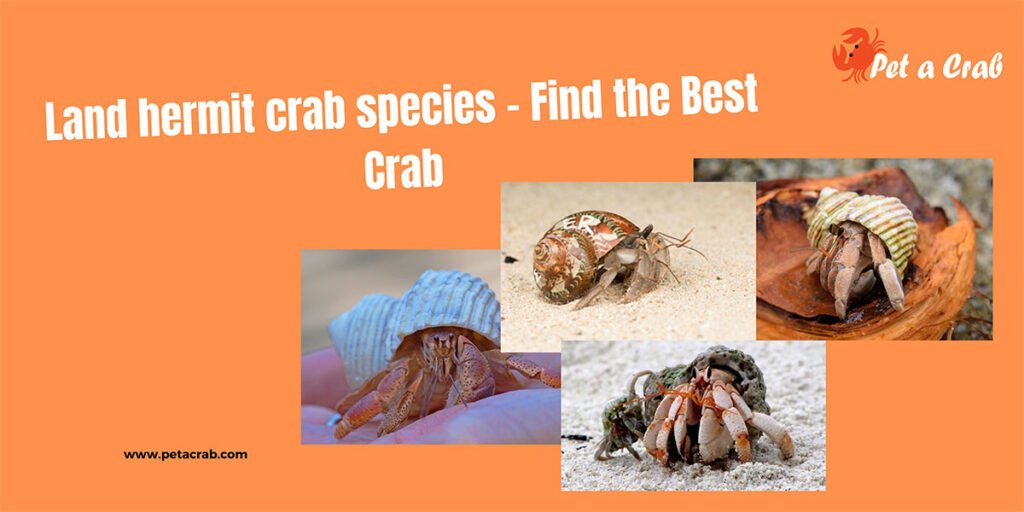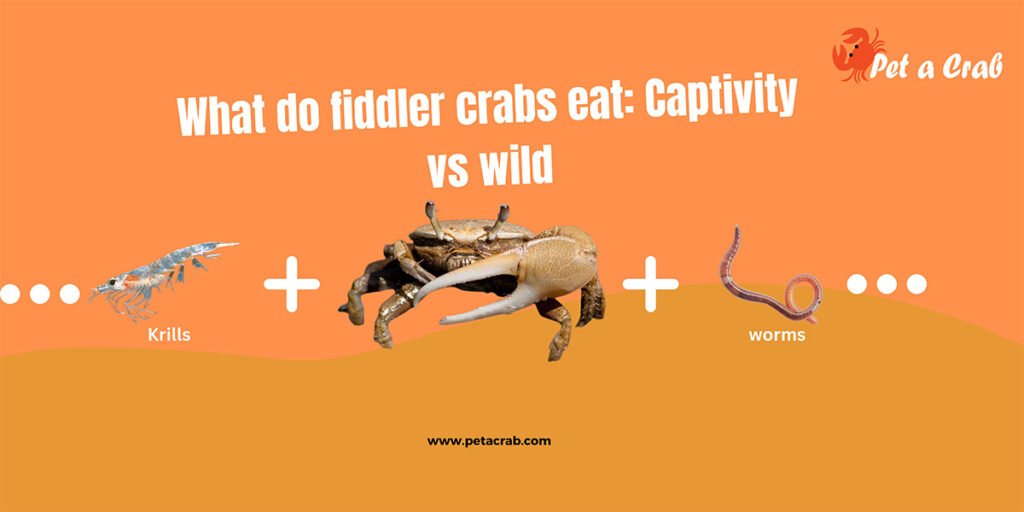Decorator spider crab or the velcro crab, is an aquatic artist in disguise. With its long, spider-like legs and masterful camouflage skills, this crab doesn’t just blend into its surroundings—it becomes a part of them. This crab is fascinating to watch and relatively easy to care for, as long as you understand its habits and needs.
Here I’ll talk about everything you need to know about this crab, including some fascinating facts, detailed care guide to keep your crab thriving.
Quick overview of decorator spider crab
- Common names: Decorator spider crab, Camposcia decorator crab, Blunt decorator crab, Tarantula crab, Velcro crab
- Scientific name: Camposcia retusa
- Care level: Easy
- Size: 4 inches max
- Color: Orange, brown, tan
- Lifespan: 3-4 years
- Habitat type: Saltwater aquarium
- Temperature: 72-78° F
- Tepperament: Semi-agressive/peaceful
- Diet: Carnivore / omnivore
- Sleeping nature: Nocturnal
Some facts about spider decorator crab
Habitat and distribution
Spider decorator crabs thrive across the Indo-West Pacific region. These crabs can be found from East Africa to Japan and Australia, particularly along the west coast of India and Saint Martin’s Island in Bangladesh. They often inhabit coral rubble and seagrass areas, preferring shallow coastal waters.
Appearance
Spider decorator crabs, Camposcia retusa, have long, spider-like legs and a teardrop-shaped body. They typically come in tan or brown shades and can grow up to 30 mm in carapace width, with their legs extending up to 10 cm wide. Short, hooked hairs cover their legs and body, helping them attach algae, sponges, and other marine materials for camouflage. Their eyes reflect light, making them easier to spot at night. With two small claws and a unique ability to blend in with their surroundings, these crabs are masters of disguise in coral and seagrass habitats.
Are decorator spider crab reef safe?
Spider decorator crabs are not entirely reef safe. While they may help spread soft corals in larger tanks by moving them around, they are known to damage corals like zoanthids, xenia, and sponges. They use these corals for camouflage, which can result in harm to the corals as they trim pieces off. So, in mixed reef environments, they can be both helpful and destructive, depending on what’s in the tank.

Behavior
Spider decorator crabs are known for their incredible ability to camouflage. They decorate their tan or brownish body with materials like sponges, shells, rocks, algae, and even soft corals. Using hooked bristles on their body, they attach these items to blend in with their surroundings and avoid predators. In aquariums, they might collect loose items like coral polyps or algae to decorate themselves, making each crab unique. Sometimes, larger crabs form relationships with anemones, which hitch a ride on their backs and feed on the crab’s leftovers.
This behavior is highly variable, with some crabs covering themselves fully while others apply fewer decorations. Factors like habitat, predator presence, size, and diet influence the level of decoration. In some cases, crabs have even been observed attaching edible items for later consumption. While peaceful, these crabs may disturb smaller invertebrates or corals when searching for items to attach.
Velcro crabs have been known to recycle decorations after molting, ensuring their camouflage remains intact as they grow. Larger crabs or those in deeper waters may rely less on decoration. Experiments have shown that crabs do not choose decorations based on color or background, suggesting the behavior isn’t about blending with specific surroundings but rather about creating a barrier to confuse predators.
At night, spider decorator crabs are easier to spot due to their eyes reflecting light, but their slow movement and unique camouflage make them harder to detect during the day. This allows them to survive in diverse environments, from coral rubble to deeper, sandy areas.
Decorator spider crab care
Gradually acclimate by floating in low light for 15-20 minutes, then slowly drip acclimate to adjust to new water.

Tank setup
Size
As you read earlier, free space with a lot of corals helps them thrive happily. So choose a bigger tank (20-30 gallon); increase the size if the tank is too crowded with other marine organisms.
Substrate
Choose a sandy substrate and mix it with gravel and stone. As a suggestion, I like aragonite sand.
Decoration
Decorator spider crabs need anemones, sponges and corals. As there is a chance they can scrape things while decorating, many aquarists love to keep them with live rocks and non-living materials. According to a study conducted by the University of Delaware, decorator spider crab doesn’t bother whether the camouflaging materials are organic or not; they need to decorate themselves, that’s all.
studied these crabs by giving them synthetic pompoms instead of natural decorations. They found that the crabs quickly attached the pompoms to their bodies, especially their legs and claws, to help camouflage themselves.
Give them some hiding spots to hide during the day; you can make caves with rock; naturally they get hiding spots in corals. Hiding spots are crucial, especially when they are molting and ensure they are not disturbed at that time.
Use other equipment like a sponge filter, a wave pump and a thermometer.
Water condition
Ensure the temperature is between 72 and 78°F with the pH 8.1-8.4, sg 1.023-1.025 and dKH 8-12.
What to feed velco crab in captivity
In the wild, spider decorator crabs have a diverse diet that includes worms, tunicates, and sometimes even small sleeping fish. They are scavengers and will eat small crustaceans, mollusks, and plant matter like algae. This diet helps them thrive in different environments, as they adapt to what’s available, feeding on whatever they can find.
In captivity, their diet expands to include a variety of foods like mysis shrimp, brine shrimp, and frozen meaty foods. Many aquarium keepers offer small pieces of seafood like clams, squid, and fish to supplement their nutrition. These crabs also help keep the tank clean by scavenging for leftover food, which is a natural extension of their feeding habits in the wild. Including chopped squid and seafood in their diet ensures they receive the necessary nutrients, such as calcium, iodine, and trace elements, essential for their overall health and proper molting.

Note 1: Brine shrimp is proven to be the best food for the survival of decorator spider crab.
Tank mates
They are harmless to fish or invertebrates; avoid keeping them with tankmates that are smaller than them, like small hermit crab species, small fish and snails. They may not cooperate with the same species, but they do well with other fish and invertebrates, such as clownfish, emerald crab, giraffe serpent starfish, peppermint shrimp, pajama cardinalfish and tailspot blenny.
Note 2: Spider decorator crab successfully bred in captivity.
Note 3: The Velcro crab is listed as “vulnerable” in Singapore.
Related article: Learn about decorator arrow crab, another crab with disguise.


